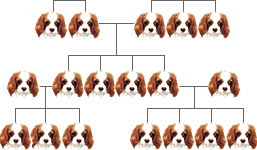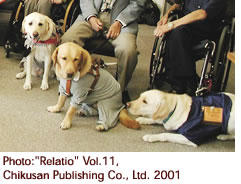The Revised Animal Welfare Law (2000) is coming up for a fifth year review in 3 more years. The Japanese Coalition for Animal Welfare is now preparing to lobby for changes that must be made to make this a truly effective law. Some of the major points that the Coalition has identified are as follows ;
- A clearer definition of abuse. The acts of abuse must be defined more precisely to include both mental and physical suffering inflicted on animals. It must be made clear to the public that physical pain is not the only factor that can bring suffering onto an animal.
- Reassess the types of penalties. Especially with regard to collectors and abusive dealers (businesses that deal with the sale or keeping of animals) fines and imprisonment, however severe is not a sufficient deterrent. The only thing that would effectively keep such individuals from committing further abusive acts is to put in bans on the keeping of animals. Japan has not attempted to utilize this type of penalty in the past but the Coalition feels that it is high time that the country considers the possibilities of doing so.
Other issues that the Coalition will bring forth in lobbying for the second revision include stricter rules in registering animal businesses including documentation requirements for retailers concerning the origin of the animal being sold, the banning of the use of live animals as prizes or souvenirs, and placing a limit on the number of animals which may be kept legally without special certification. Concerning this last point, the Coalition hopes to put an upper limit on the number of animals that can be kept in any establishment, including individual homes as well as breeding houses, without legal certification. More specifically any establishment keeping more than 10 dogs and cats (sum total), for example, must register with the local authorities and is obliged to accept any inspection by the said authorities. These establishments if found to be below standard in their stewardship of the animals must then follow whatever orders are given to improve the conditions. This should contribute somewhat to the alleviation of the collector issue as well as to that of puppy mills and roadside menageries.The solution to this problem must be multifaceted. Developers and the authorities governing their activities need to lay out new strategies enabling a better system of coexistence to be put in place. New and more humane yet effective ways to drive dangerous wildlife away from residential areas must be developed. And last but not least, a thorough education system must be established to teach the human community the do's and don'ts of living in wildlife rich areas. This perhaps should be supplemented by severe penalties for those who are unable to follow the rules.
Though the Coalition can by no means guarantee that all of the above improvements will be accepted by the legislators, it is at least worth a try. With 3 more years to work up to the actual review we have yet some time in which to build our forces for greater lobbying power.
















